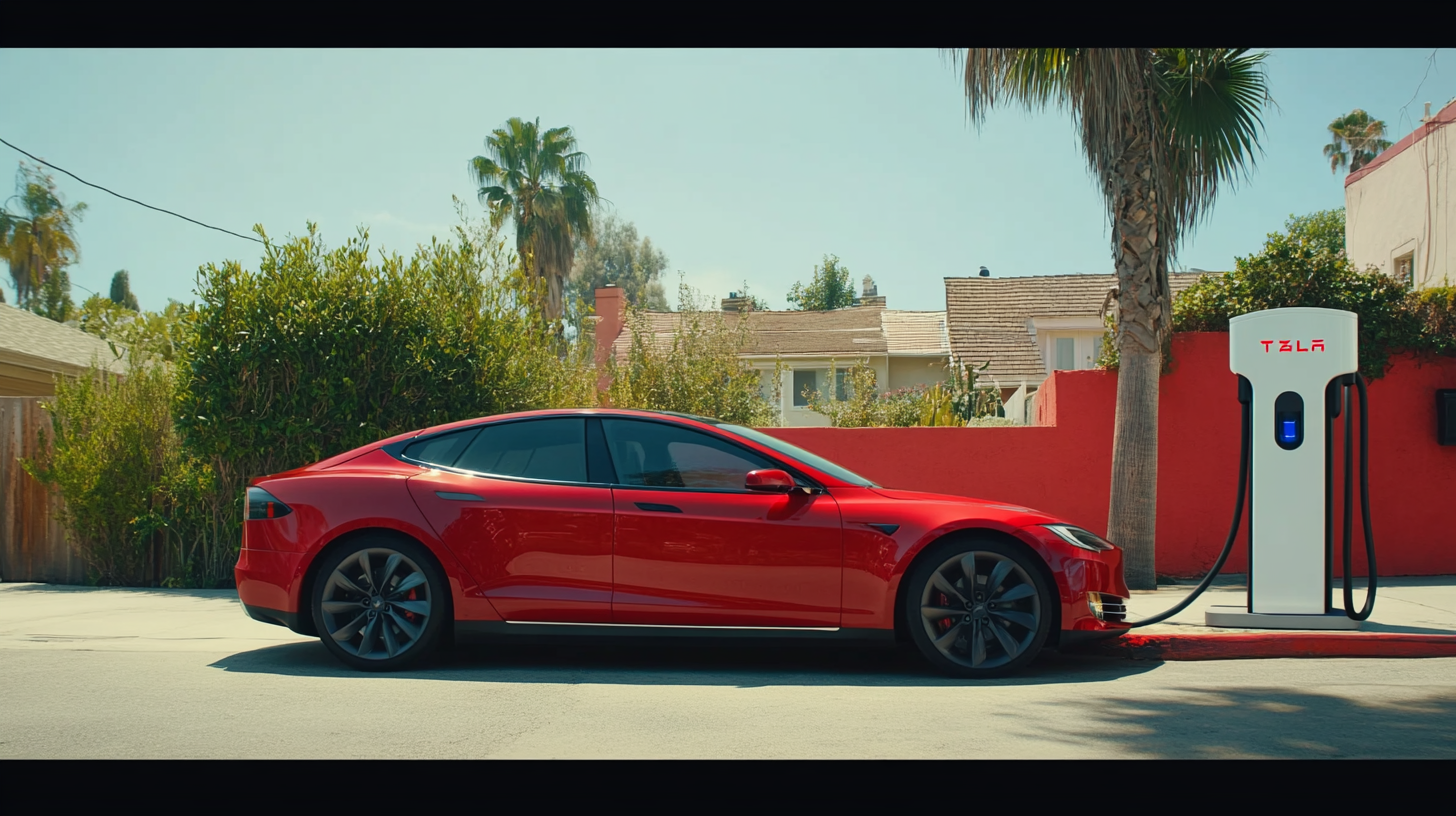With the growing global acceptance of electric vehicles (EVs), the urgent need for efficient and convenient charging solutions is escalating. The Portable EV Charger is one of the most talked about technologies in this area. It provides flexibility and convenience for the EV owner. With this charger, the vehicle can be charged almost anywhere. However, integrated portable charging technology also has a wide range of global regulations that can make it a burden to purchase for consumers or businesses. These regulations contribute to the need for navigation for proper compliance, safety, and optimum performance across diverse markets in the world.
This blog will focus on some of the most important aspects to consider and challenges faced when buying Portable EV Chargers across geographical divide. From appreciating the difference in regional regulatory requirements to the importance of choosing the proper charger according to specific needs, we will give lots of information to enable efficient purchase decisions. Individual or business EV owners looking to improve their investment scope in charging solutions will now know what it takes to make informed decisions as they traverse the global landscape of portable EV charging solutions.

EV charger regulations are an ocean of complexity that varies with every region across the globe due to the rising demand for EVs. Countries have come up with their own regulatory constructs to ensure safety, compatibility, and environmental standards of EV charging infrastructure. For instance, European regulations are focused on interoperability and standardized connectors, which leads to an obvious promotion of the use of the Combined Charging System (CCS) as the preferred standard for charging. This, of course, aims to create a seamless charging experience for consumers and hopefully provide a stimulus for wider acceptance of EVs. North America finds itself in a more diverse regulatory approach, with the utility incentives and infrastructure development for the charging station being in sharp focus. States like California, for example, have ambitious programs to ensure the proliferation of public charging stations while at the same time making sure that such installations are safe and meet performance specifications. The North American patchwork of regulations may prove to be a hindrance for manufacturers and consumers alike, making local understanding of regulations necessary for compliance and optimized user experiences. Emerging markets have also started to get into the act and are working toward EV charging regulations on their own, often borrowed from frameworks already in use in already established economies. This same evolutionary process will develop a global debate on best practices, facilitating the spirit of collaboration and knowledge-sharing amongst key players. It will be imperative for businesses and customers to keep track of the regulations affecting them as they engage in greater depth in the EV market, as these regulations will be key to the entire kompleksities facing purchase and installation of portable EV chargers around the globe.

With the rising increase in the EV market, adaptable portable EV chargers have become hot cakes all over the world. Consumers have a tough time trying to understand the regulations as they vary from one place to another. It will be essential especially for consumers and entrepreneurs interested in adopting cheap, portable charging systems to understand the critical areas in the area of jurisdiction.
The standards are also conferred by different bodies like Underwriters Laboratories (UL) and National Electrical Code (NEC). North American countries rely on such to test the safety of portable EV chargers and, hence, actual consumer needs of these chargers. Most Americans are searching for chargers meeting standards to be used with their model EV for certification that they are absolutely safe when used. The EU has created IEC 62196, a technical and eco-design regulation governing mobile EV charger implementation.
In Japan, chargers are generally tagged with advanced safety features because of its high seismic activity requiring such chargers to be subjected to earthquakes testing. Countries in Asia such as this one view regulation as mostly localized. New emerging markets do have a little set standard of regulations that need to be strictly adhered to by either party but will be considered to offer main compatibility with available infrastructures within the country as well as EV models within that region. Having know-how about these regional features is vital in making appropriate decisions for portable EV chargers in different countries under the law for both users and legal compliance.

Increasing acceptance of electric vehicles (EV) has led to an increase in the demand for portable EV chargers. But traversing through the maze of international regulations is central to both the manufacturer and user domain. Noncompliance with these regulations can severely stifle the cost and availability of the EV chargers, thus starving off the very nature of a market.
In other words, compliance concerns often relate to certification of safety and performance standards, which can differ significantly from one region to another. These discrepancies could unnecessarily inflate the production cost if manufacturers have to invest in conforming to different sets of requirements. While companies would struggle to certify their products in different markets, such processes would involve prolonged timescales and logistical hurdles. Therefore, this may escalate the price of chargers to consumers while limiting the type of chargers available in certain regions.
The stringent regulatory arrangements may further hinder every other aspect of control of EV charger supply chain. In other places, the stringent compliance requirements lead to increased market entry timelines for new products, resulting in charger shortages of compliant types. Such unavailability does not favor prospective EV buyers and has an eventual impact on the electric vehicle adoption rate. Thus, understanding the implications of regulatory frameworks is critical for manufacturers pondering operating in this lucrative industry and consumers enthusiastic to embrace electric mobility.

One of the greatest issues regarding portable chargers is innumerable safety standards and certifications these devices need to comply with in every region. Electric vehicle usage has increased with every household taking up one electric vehicle or more, and with that growth, there came a clear realization from different international and local organizations on bringing up regulatory frameworks that dictate how effective and safe a portable EV charger should be. These regulations are important not only for the safety of the devices but also to protect you as a consumer from resorting to litigation if an emergency occurs earlier than expected.
To illustrate this, all portable EV chargers certified with the UL (Underwriters Laboratories) mark in the USA, CE mark in Europe, or other applicable regional certifications have been subject to rigorous electrical and performance testing, as well as environmental impact as the criteria from which certification has been granted. Each certification is like a stamp that guarantees the buyers that the product meets certain criteria to lessen the risks associated with electric shock, overheating, and fires.
To make the charger compatible and connect to different EV models, manufacturers must be aware of local regulations that might affect them. The landscape of changing market and technology makes it more possible for any product to have credibility and for the consumer to trust it in a transparently demanding landscape of safety, compliance, and credibility. These standards will facilitate the entire journey of investment into a portable EV charger to a great extent, as it leaves you in a position of having a secure and informed buying decision.
As the electric vehicle (EV) global market keeps expanding, it is vital to maneuver from the difficulties internationally regarding the standard regulations that govern portable EV charging. From the recent report published by the International Energy Agency (IEA), it can be concluded that the number of electric vehicles across the globe exceeded 10 million in 2020 and is expected to reach 145 million by 2030. The major growth is for the development of such an infrastructure concerning robust charging. There would also be significant differences in the regulations as per the regions, which makes it really tough for the manufacturers as well as consumers. Future trends indicate that harmonized regulatory frameworks will replace those currently in place, ease adaptation and spur technological advancements in the market. A public charge station at least one per million people will be required under the EU Green Deal by 2025, always so proactive as effective regulation. Also, standardization organizations such as the Society of Automotive Engineers (SAE) are in alliances to develop universal charging protocols, which can ease the way to buy portable chargers in other markets. By 2025, it is expected that 40% of the new vehicles sold worldwide will be electric or hybrid; hence, more urgent requirements for unified standards to accommodate this fast-growing category.
Moreover, it is a new trend from the emerging markets, which resorts to exceptional types of regulations in favor of the EVs. It could be classified under examples such as China, whose subsidies and incentives were promoted with charging infrastructure development and came up with over 1.68 million public charging points around the country. This pretty much perfects the drive towards an embracing of electric mobility around the world. Still, it ushers in the note that regulation will have to be focused onward to handle the relatively fast-evolving technologies. Thus, those new, innovative approaches in regulations combined with international cooperation will decide on the ultimate fate of portable EV chargers in a competitive global market.
In Europe, the regulations primarily focus on interoperability and standardized connectors, with an emphasis on promoting the Combined Charging System (CCS) as the dominant charging standard.
North American regulations emphasize utility incentives and the development of charging station infrastructure, while European regulations prioritize interoperability and eco-design standards.
The IEC 62196 standard dictates the technical specifications of mobile chargers in the EU, including eco-design requirements that aim to reduce environmental impact, making compliance essential for market access.
Organizations like UL set crucial standards for portable EV charger approval in North America, ensuring compatibility with common EV models and safe operation.
In Asia, particularly in Japan, local regulations often emphasize advanced safety features, with requirements for chargers to be tested for seismic activity due to earthquake susceptibility.
Manufacturers must navigate multiple sets of safety and performance standards across regions, leading to increased production costs and potential delays in product introductions.
Strict compliance requirements can slow down the introduction of new products, creating shortages of compliant chargers, which may deter potential EV buyers and affect electric vehicle adoption.
Understanding regional regulations helps consumers make informed choices about portable EV chargers that meet legal standards and compatibility with local electrical grids, ensuring optimal user experience.
Compliance with varying regulations can lead to increased production costs for manufacturers, which may result in higher prices for consumers and limit the variety of chargers available in the market.
Emerging markets are working to establish their own EV charging regulations, often influenced by the frameworks of more developed nations, leading to a global dialogue on best practices.